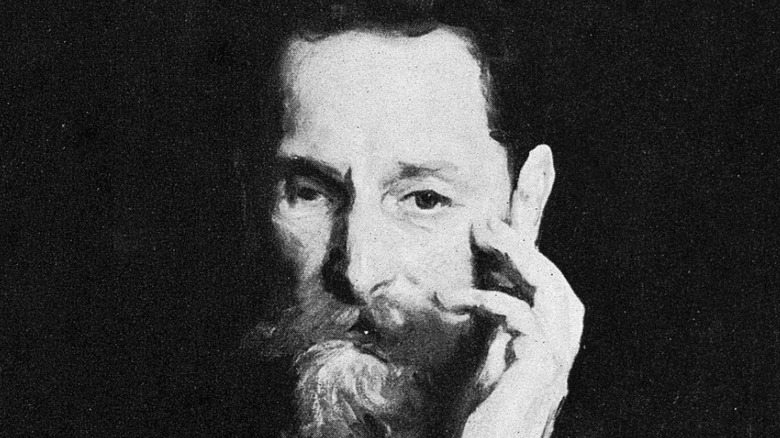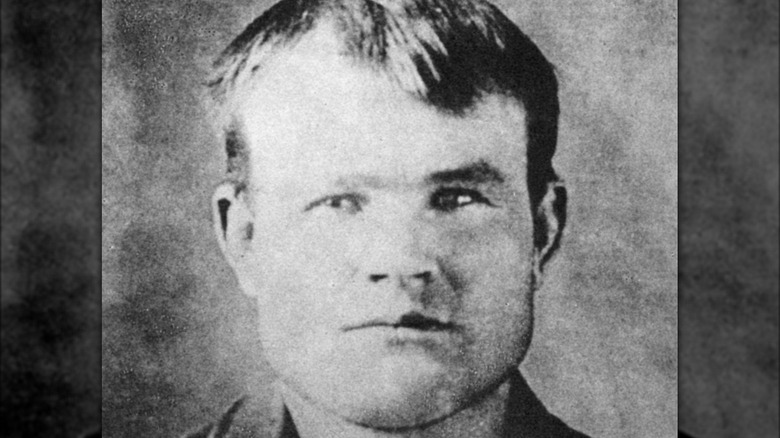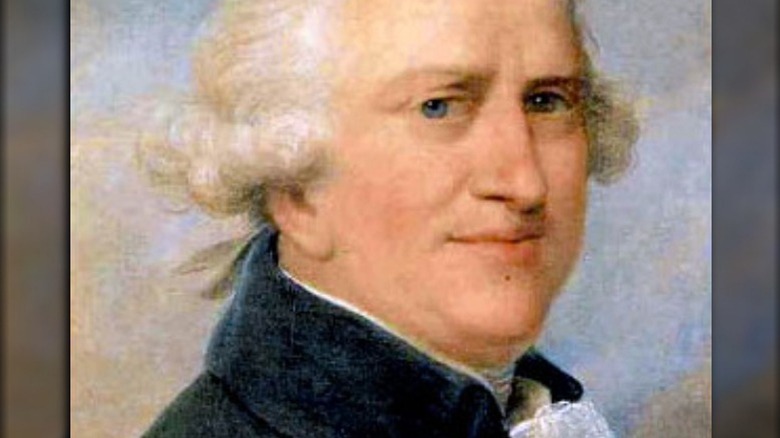
Things People Get Wrong About Jesus
Even if you’re not a Christian, chances are pretty good that you’ve heard of the religion’s central figure: Jesus Christ. He’s quite possibly one of the most pivotal figures in all of history, essentially kicking off what’s still the world’s largest religion, Christianity. It had an estimated 2.3 billion adherents in 2015, according to the Pew Research Center, accounting for over 30 percent of the share of world religions.
That’s pretty darn good for a belief system that’s about two millennia old and whose ostensible founder may or may not have believed that he was at the head of a sea change in religious thought. Regardless of whether or not he thought that he was the Messiah or Son of God, there’s no denying the fact that Jesus was and still is a pretty big deal.
But even though billions of people profess faith in him and his teachings, there are quite a few misconceptions about Jesus Christ. From the basics of his appearance to accepted wisdom about his theology, there are a number of surprises in store. And, whether you turn to outside sources or solely devote yourself to studying the Bible, there are many gaps, contradictions, and open questions about the man himself. So, it may be time to adjust some of your basic assumptions about this pivotal and enigmatic figure, perhaps discarding a few of the more convenient and simplified stories along the way. These are the things people get wrong about Jesus.
Everyone assumes that they know what Jesus looked like
As much as a major world religion centers around him, there’s surprisingly little direct evidence that clues us in to what Jesus really looked like. And, if you happen to have taken in some of the classic images of Jesus — that is, “classic” as defined by centuries of European-influenced art making — then chances are pretty good that your internal image of Jesus is all wrong.
According to History, the Biblical evidence about Jesus’ appearance is practically nonexistent. We know that he would have been about 30 years old when he started making waves as a religious leader. It’s also pretty reasonable to conclude that he was a normal-looking guy for the time, so standard issue that Judas Iscariot had to point him out when it came time for Jesus’ arrest by Roman authorities. And that’s pretty much it, unless you really want to grasp at straws with a couple of other verses. It doesn’t help that Western art has changed its depiction of Jesus many times over the years, often depending more on cultural trends and personal preferences of the artist than documented fact.
That said, we can make some reasonable conclusions about his appearance, extrapolating from common traits seen around the region at that time. In “What Did Jesus Look Like?,” academic Joan E. Taylor puts forward an educated guess that Jesus likely had curly hair, dark eyes, and brown skin, much like other people of his community.
People think Jesus was a carpenter
It’s often plainly stated, as if it were a simple fact, that Jesus began his life as a humble carpenter, working with his hands and in obscurity before he became a major religious figure. However, the use of the word “carpenter” isn’t quite right here.
In reality, the original Greek text of the Gospels refers to Jesus and his earthly father, Joseph, as tektōn, according to the Journal of the Evangelical Theological Society. And also, for what it’s worth, there are only two verses (Mark 6:3 and Matthew 13:55) that even bother to reference Jesus’ occupation or that of Joseph. It seemingly wasn’t all that important, or not to the writers of the Gospels.
According to Architectural Histories, the job description of a tektōn can include plenty of woodworking, especially given that wood was a pretty common building material for the time and place that Jesus would have been working in. So, doesn’t that mean he was a carpenter? No, not really. Rather, a tektōn has been defined in any number of ways, with jobs that can encompass carpentry work, but is more often generally defined as “builder.” It may be more accurate to think of Jesus and Joseph as general contractors of Nazareth. It appears that we got to “carpenter” because, when English translations of the Bible started to debut, there was already an established tradition of referring to Jesus as a carpenter, despite the lack of clear Biblical evidence.
You think Jesus was born on December 25th
Now, this one may seem painfully obvious. Why else would so many Christians celebrate the birth of Christ every year on December 25th if he wasn’t born on that date, more or less? Only, if you managed to travel back in time to the first few centuries after Jesus’ death, you’d be hard-pressed to find any celebration of his birth, much less one taking place around that time of year.
According to History, the oldest known record of a Christmas-like celebration is an observation of the Nativity that took place in Rome in 336 CE. Before that, no one claimed to know at what time of year Jesus would have been born, nor did they seem very concerned about it. Easter, which commemorates Jesus’ crucifixion and resurrection, was considered far, far more central to the Christian celebratory calendar. Later, theologians would contend that God had created the world on the spring equinox, meaning that Jesus was probably conceived around that same time of year (the lack of Biblical support notwithstanding).
There’s no directly stated reason why early church leaders picked December 25th as the holiday, but it’s telling that Christmas lines up with pagan festivals like the Roman Saturnalia, which themselves tend to occur around the winter solstice. It could be that, as Christianity began to make inroads across the globe, it was relatively easy for proselytizing monks and other missionaries to incorporate their Christian observances into preexisting non-Christian solstice celebrations.
People believe that there is very clear evidence for Jesus outside of the Bible
History reports that scholars commonly accept there was a real, historical Jesus. However, the more complicated truth is that direct evidence for his existence is frustratingly hard to come across. So, while we can be reasonably certain that there was once a religious leader named Jesus who lived in what’s now Israel around the 1st century, things after that point get murky pretty quickly.
First, there is no documented archaeological evidence for Jesus, meaning that no one has yet found any tangible things that are for sure connected to the man. Yes, this means that even long-venerated religious relics, like the supposed crown of thorns traditionally housed in Notre Dame Cathedral or bits of the “true cross” displayed elsewhere are unconfirmed.
So, if that particular set of proof is lacking, what about documentary evidence? That avenue has proven more useful, though not exactly fruitful. Some non-Biblical writers did confirm a few spare details of Jesus’ life. Flavius Josephus, a Jewish historian living in the 1st century, offers up one of the earliest such accounts. In his “Jewish Antiquities,” Josephus writes that of a man named James who was unfairly executed, mentioning that the victim is the brother of “Jesus-who-is-called-Messiah.” Yet, a longer account may have been doctored by later Christian editors. Another brief mention comes in the “Annals of Imperial Rome,” where historian Tacitus refers to a man who, by the 2nd century, was called “Christus.”
You believe that Jesus had long hair
Quite a few depictions of Jesus over the centuries have shown him with long, rather gorgeous hair. The savior should, after all, have nice, flowing locks, you can imagine many artists thinking to themselves. It certainly wouldn’t do if he had a boring short cut like so many other people throughout history, anyway.
But it could well be that Jesus didn’t have the long, flowing tresses that you see in innumerable paintings, movies, and TV shows. It’s a good look but, as it turns out, not strictly a historically accurate one. According to the BBC, having a big old beard and long hair was typically the mark of a Greek or Roman god, such as Zeus. Everyday people would have been far more likely to be clean shaven and short-haired. In fact, the earliest known images of Jesus from the 3rd century show him in just such a manner.
There is a bit of an out here, though. If Jesus were traveling about preaching, he may not have had time to visit a barber and could have developed something of a beard. But the long hair would have surely marked him out as a member of a group known as the Nazirites. Yet, because no one ever claimed Jesus was a Nazirite and because he drank wine (another no-no for the Nazirites), we can make a reasonable conclusion that he had short hair and, at most, a short beard like everyone else.
Everyone's certain Jesus was chill
Jesus was, by many modern accounts and retellings of his story, a generally loving guy who preached peace and togetherness during his time on Earth. You certainly can’t deny this, as there are plenty of Bible verses where Jesus tells people to love one another and he is commonly known in Christian circles as the “Prince of Peace” (via Christianity.com).
But it would be a mistake to assume that Jesus was a constantly smiling, chill sort of person who gave out free hugs all the time. In fact, there are plenty of Biblical verses that underlie his very human nature of getting angry on occasions, according to Got Questions. There’s the incident where he overturned some tables and upset moneylenders working in Jerusalem’s temple, a story so striking that it’s mentioned in three Gospels (Matthew, Mark, and John). He was also known to get clearly frustrated at people who weren’t cottoning to his teachings, as when the Pharisee fundamentalists wouldn’t answer his questions, in Mark 3:1-5.
According to Got Questions, it’s not that Jesus’ anger was a bad thing, especially considering that no Bible verses really indicate that his emotions tipped over into uncontrolled rage (though the moneylenders may have argued otherwise at the time). Neither is there any textual evidence that Jesus stewed over his anger and allowed it to become a grudge. For many believing Christians, while this may be a surprising point of Jesus’ actions and personality, his anger appears righteous.
People are sure his name was Jesus
Though it’s the name many of us know him by today, the 1st century Jewish religious leader and prophet who is now called “Jesus” would have never heard that name applied to him during his lifetime. According to PBS’ Origin of Everything, his original Hebrew name was actually “Yeshua.” If we were to literally translate that to a more modern form, the originator of Christianity would more accurately have gone by “Joshua.”
So, how did we get to Jesus? It’s all due to the Greek language employed in the New Testament. His name went from “Yeshua” to “Iesus,” namely because Greek just didn’t have the same characters to handle the sound of the original Hebrew. “Iesus,” which rather easily became “Jesus” down the line, was their best approximation.
What’s more, Jesus wouldn’t have been alone in the name game. As Slate reports, Yeshua would have faced the same problem borne by modern kids with popular names: everybody in the region, it seems, was named “Yeshua.” It certainly pops up often in the Hebrew Bible, though those individuals often became “Joshua” in later translations. Furthermore, just from the time of Jesus’ crucifixion, excavators have uncovered over 70 tombs bearing the name. Not only does that make it incredibly hard to find archaeological evidence of Jesus’ tomb — which would be an absolutely groundbreaking discovery for Biblical archaeology — but it underlies just how initially common and unremarkable Jesus may have seemed upon first glance.
People think we have eyewitness accounts of Jesus
Given how many stories there are of Jesus’ life, like the Gospels of Matthew, Mark, Luke, and John, surely this means also that we have some pretty good on-the-ground reports of his activities. Only, there really aren’t. We have some accounts that get decently close within a generation or so, like historian Flavius Josephus’ 1st century record that references Jesus (via History).
But, when it comes to eyewitness accounts from people who actually met the man, things get pretty shaky. Speaking to NPR, religion professor Bart D. Ehrman notes that we can’t be so sure that the Gospels were actually written by Matthew, Mark, Luke, or John. Instead, it’s quite possible that later writers simply attached the names of the apostles to their work. If they were actually written by the people in question, then why are there so many significant differences between the details of the Gospels, like whether or not Jesus was divine?
Perhaps most significantly, there’s no language in any of the Gospels that clearly indicates the writer was there. And wouldn’t it have bolstered the account to say it was an eyewitness story, especially in the early years of Christianity when the religious movement was just getting started? The faithful may argue against this idea but, looking at things strictly from the perspective of the text, there’s no confirmed proof that the apostles or anyone else who was part of Jesus’ circle ever wrote down their own accounts.
You assume that Jesus was a Christian
Contrary to some modern folks’ expectations, there’s practically no way that Jesus would have thought of himself as a Christian. First of all, as the BBC reports, the “Christ” part of Jesus Christ was not a feature of his actual name. It’s actually a Greek word related to a Hebrew term for “messiah” and is effectively translated as “anointed one.” It’s a title more than anything else, and one that seems to have only really caught on after Jesus’ death, per Britannica. So, on at least one level, he simply couldn’t have thought of himself as “Christian.”
Moreover, PBS’s Frontline contends that Jesus would have very likely seen himself as a Jewish person. He was born in a Jewish community, to a Jewish family, and would have been intimately familiar with the various laws and practices of Judaism in the 1st century. As professor Shaye J.D. Cohen argues, even the Gospels tacitly assume that Jesus was Jewish, with nary a mention of him starting a new religious movement, much less one that would be called “Christianity.”
For Jesus and everyone around him, it’s far more certain that he was seen as someone with a unique connection to God, but not an individual in the process of breaking away from established Jewish tradition (at least no more than other existing sects within Judaism). It’s only after that religious movement grew into independent Christianity over the following centuries that anyone would consider otherwise.
Everyone thinks the divinity of Jesus is crystal clear
One of the greatest debates in the realm of religious studies and Christian theology seems to be the matter of whether or not Jesus believed that he was actually divine. Not divinely inspired, not metaphorically the “Son of God,” but genuinely imbued with a spark of something beyond humanity. What’s the right interpretation?
Turning to the Bible may give you more conflicting answers, according to the BBC. The Gospel of Mark at first seems to accept the idea of a divine Jesus, but then includes a couple of verses in Mark 10:17-18 where Jesus himself seems to deny being directly related to God. But Matthew 1:22-23 seems to make a more obvious connection between man and deity, noting that another name for Jesus, Immanuel, means “God is with us.”
Fine, the New Testament is a bit scattershot on the subject, but did Jesus himself ever confirm the situation one way or another? Religion professor Bart D. Ehrman, talking to NPR, says that the Gospel of John is the most direct in that respect, with claims that Jesus essentially said that he and God were the same. Only, Ehrman claims that he and other scholars are a little suspicious of the Gospel of John’s accuracy. The Gospel’s author may have been more invested in making a theological point than transcribing actual history or documented words of Jesus. It is clear, however, that later scholars and leaders wanted to imbue Jesus with divinity.

The Real Reason Joseph Pulitzer Communicated In A Secret Code

This May Be How Butch Cassidy Got His Nickname

The Century Old Ax Murder Mystery That's Still Unsolved

This Was The Most Popular Pastime On Alcatraz

The Truth About KISS' Relationship With The Beatles

Why Glass Still Remains A Mystery To Physicists

What Alcatraz Was Used For In The 1850s

The Dark Truth Behind The Violent Ice Cream Truck Wars Of The 1980s

Here's What It Was Like For Prisoners In The Tower Of London

How Much Money Was The Tea In The Boston Tea Party Worth?
































